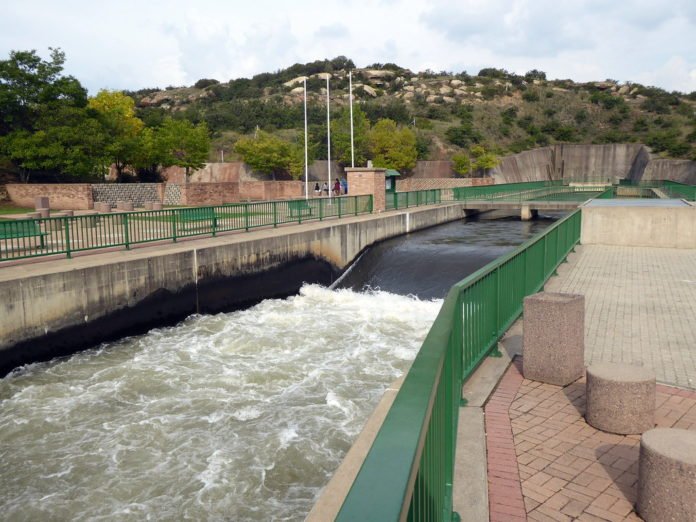Underground tunneling works at the Lesotho Highlands Water Project (LHWP) site inside the two Polihali diversion tunnels are progressing well with excavations of the outlets advancing at a pace of about 6 meters a day per tunnel.
The tunnels are being excavated in advance of the construction of the Polihali dam in the second phase of the Lesotho Highlands Water Project in a bid to reduce the dam construction window.
The tunnels, one of which measures 7 meters in diameter and almost 1 kilometer in length while the second measures 9 meters in diameter and also almost 1 kilometer in length, run parallel to each other from the intake point to the outlet downstream of the Polihali dam.
RELATED: Lesotho Highlands Water Project to supply SA by 2026
Phase two works
This will be followed by the tunnels’ concrete lining works that include concrete casting and reinforcement which have already started on tunnel one. Both tunnels’ intake and outlet portal drives have been reinforced with sprayed concrete and rock bolts, and preparatory works for the concrete inlet structure are also continuing.
The Polihali dam project involves construction of a concrete rockfill dam with a 165m wall. The Dam will be built downstream of the confluence of the Orange-Senqu and Khubelu Rivers in the Mokhotlong District of Lesotho. It will allow the formation of a reservoir on the Orange and Khubelu Rivers over an area of 5,053 hectares, with a total storage capacity of 2,325 million m³.
The dam will be supported by a saddle dam, which is an auxiliary reservoir built to confine the reservoir created by a primary dam, either to allow for higher water elevation and storage or to limit the extent of the reservoir in order to increase its yield. Impoundment of the Polihali reservoir is expected to start in 2024, with water delivery planned to start in 2027.
Read: Conserve water, summer approaching – Cape leader warns
The project which happens to be a joint venture between SA and Lesotho will not only supply water to Gauteng but also generate work in the thousands for the people living around the areas. The first phase was initiated thirty years ago, with water and electricity supply to South Africa and Lesotho respectively from the Katse and Mohale dams.
The second phase will see an increase in the water supplied to South Africa from 780m – 1.37Bn cubic metres per year. Funding for the project, was sourced from new JSE-listed bonds as well as the tariff levied on users of the water and a levy on the mining industry to fix acid mine drainage.





